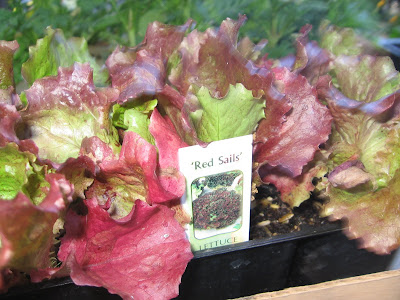
We had some real excitement in our quiet yard this weekend.
The photo above, taken Sunday afternoon, shows the end result, which is the
absence of a huge bee swarm that gathered there on Saturday morning. It would have been hard to photograph even when present because it was high up and hidden by the leaves. I could only see it when the wind swung the branches up and the dramatic dark mass -- about the size of an elongated basketball -- became visible. I could keep track of where it was only because of the cloud of bees that constantly surrounded it.
There seemed to be nothing unusual going on when I went out on the usual inspection tour Saturday morning. It was warm enough already for insects to be flying and I wasn't surprised to hear plenty of buzzing. I assumed the bees were busy in the locust trees.
"That buzzing is awfully loud," I thought, "the locusts must be quite a draw." Then I noticed that the whole yard was full of darting specks zooming back and forth. The movement was most intense near the plum trees -- not random specks but a whirlpool of dancing motes.
I retreated to the house, bringing trusty canine companion C. with me, and then ventured out alone to watch the show from a safe vantage point. I had heard that swarming bees are gorged with honey before they take off on their grand journey and in a very mellow mood -- not inclined to be aggressive, as they are when protecting a hive. But no need to take chances.
Over the space of half an hour the whirlpool coalesced into a solid ball hanging from a plum branch. Now what?
Call a beekeeper, of course. Through previous adventures with hornets I've learned that the county beekeepers association is a wonderful group of volunteers who will help out when called. From a long list I picked Richard Wallenstein of the
Lavender Bee Farm because of the evocative picture it suggested of waving fields of lavender sonorous with bees.
He was extremely nice and willing to come anytime. Unfortunately, before the logistics were figured out the bees had moved on -- they disappeared sometime on Sunday. I regret that they will not find a haven at the Lavender Bee Farm and am disappointed at not seeing first hand the gathering in of a wild swarm. But this has been a great chance to learn about the swarming process and see at least some of it close up.
A swarm is a remarkable event. When a hive gets too populous, the old queen leads a throng of immigrants to find a new home, leaving behind some royal eggs so the remaining workers can hatch out a new queen. Thousands of bees pack themselves in around the migrant queen when she lands at a reconnoitering spot.
About fifty workers serve as scouts, canvassing the area for a good location for their new home. Each returning scout does a coded dance to convey the features of a proposed site: size, protectedness, warmth, freedom from ants -- just like minuscule real estate agents talking up closet space and local schools. The more excited the dance, the more sure the scout about the suitability of a particular place. Scouts try to convince each other to come and inspect their finds.
The group of scouts, no longer a convention of real estate agents, but a decision-making body -- a parliament of bees -- takes in all the information and mysteriously, over a period of hours or even a day or two, weighs the alternatives and makes its selection. Perhaps it's really neither a convention nor a parliament, but a dance-off? Saturday Night Fever at The Swarm!
When the choice is made the throng buzzes off to its chosen spot. Unless, of course, it is collected by an eager beekeeper.
In olden times, wild swarms were the means of gaining new hives. And the earlier in the season, the better the swarm. As an old English poem puts it:
A swarm of bees in May is worth a load of hay;
A swarm of bees in June is worth a silver spoon;
(which is evidently less valuable than a load of hay . . .)
A swarm in July isn't worth a fly.
Good luck little May 1 bees, wherever you are. You are worth a lot to me. And thanks for helping me discover Lavender Bee Farm. They give tours.













